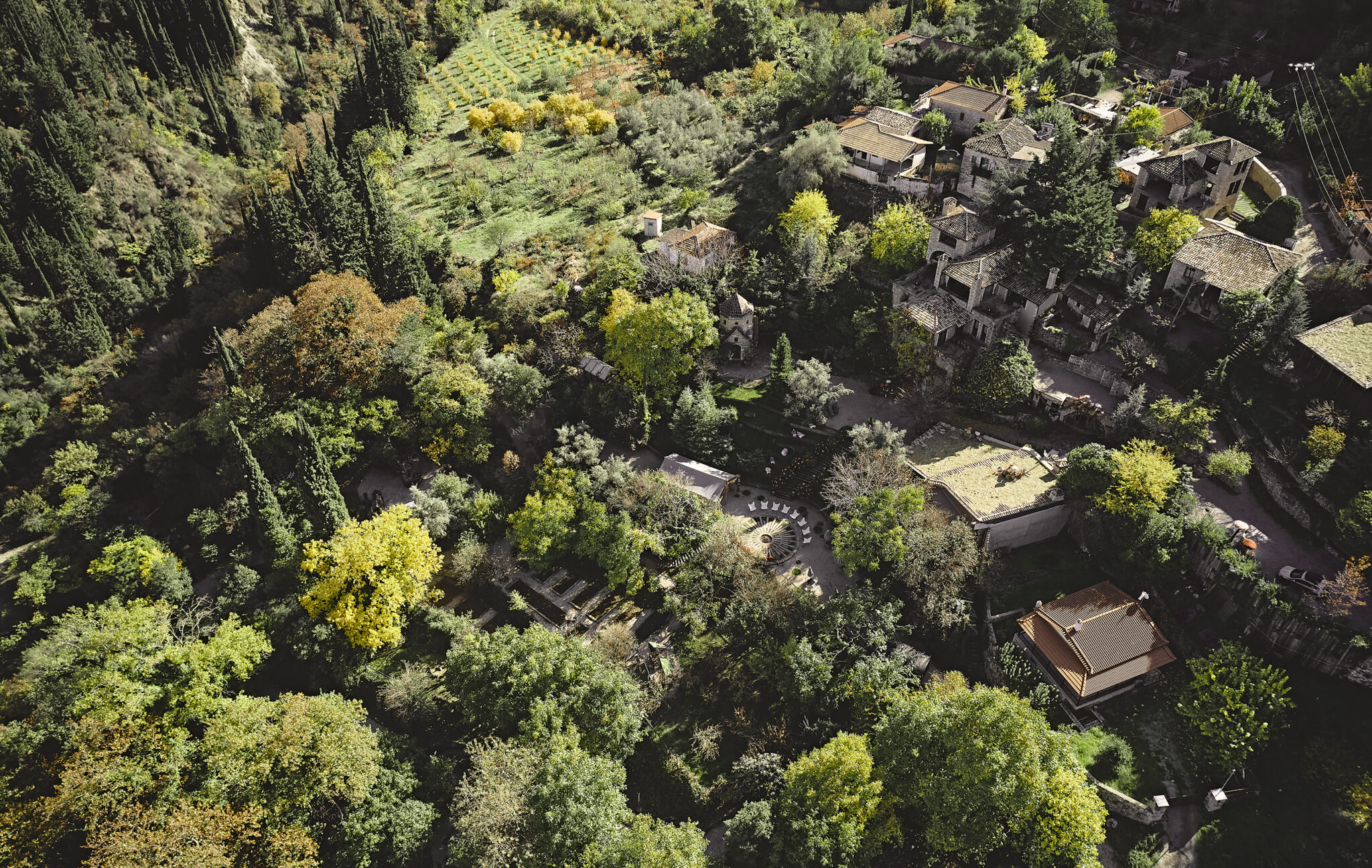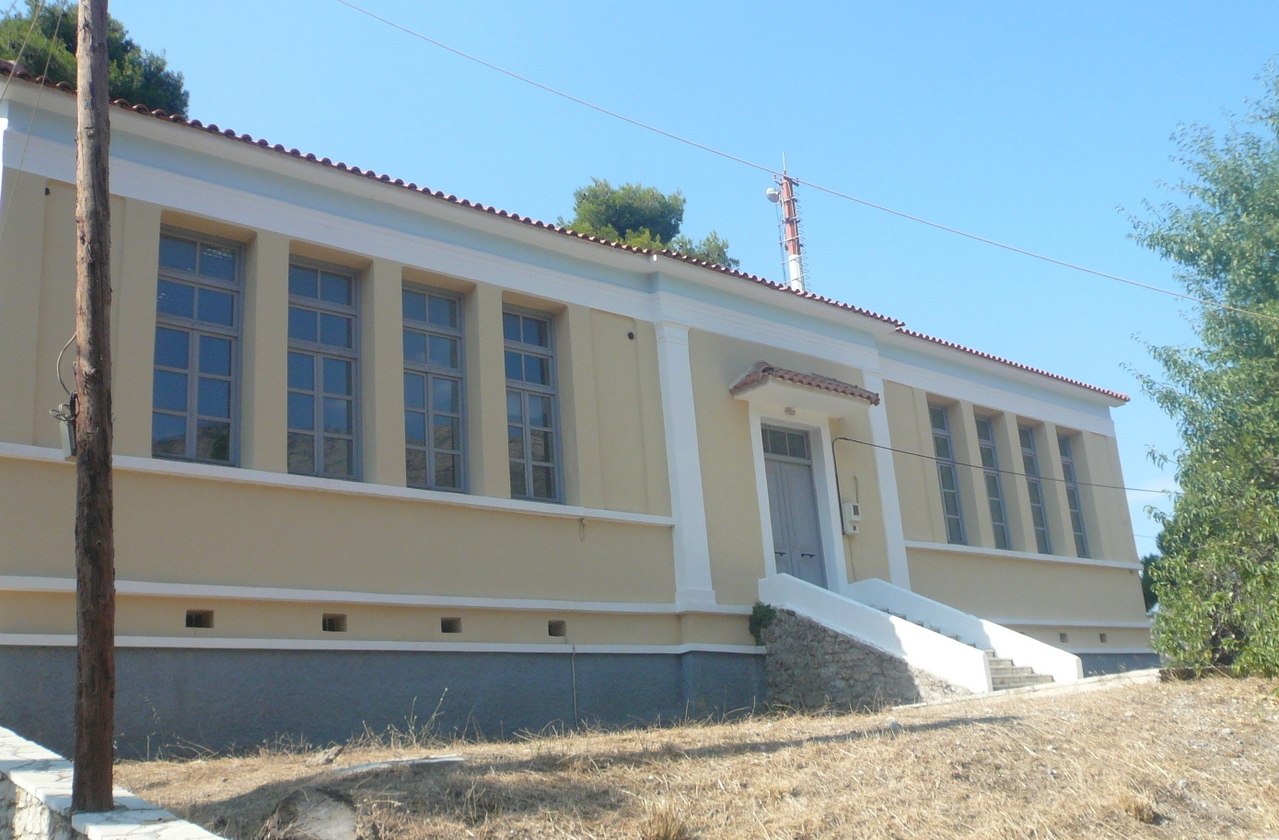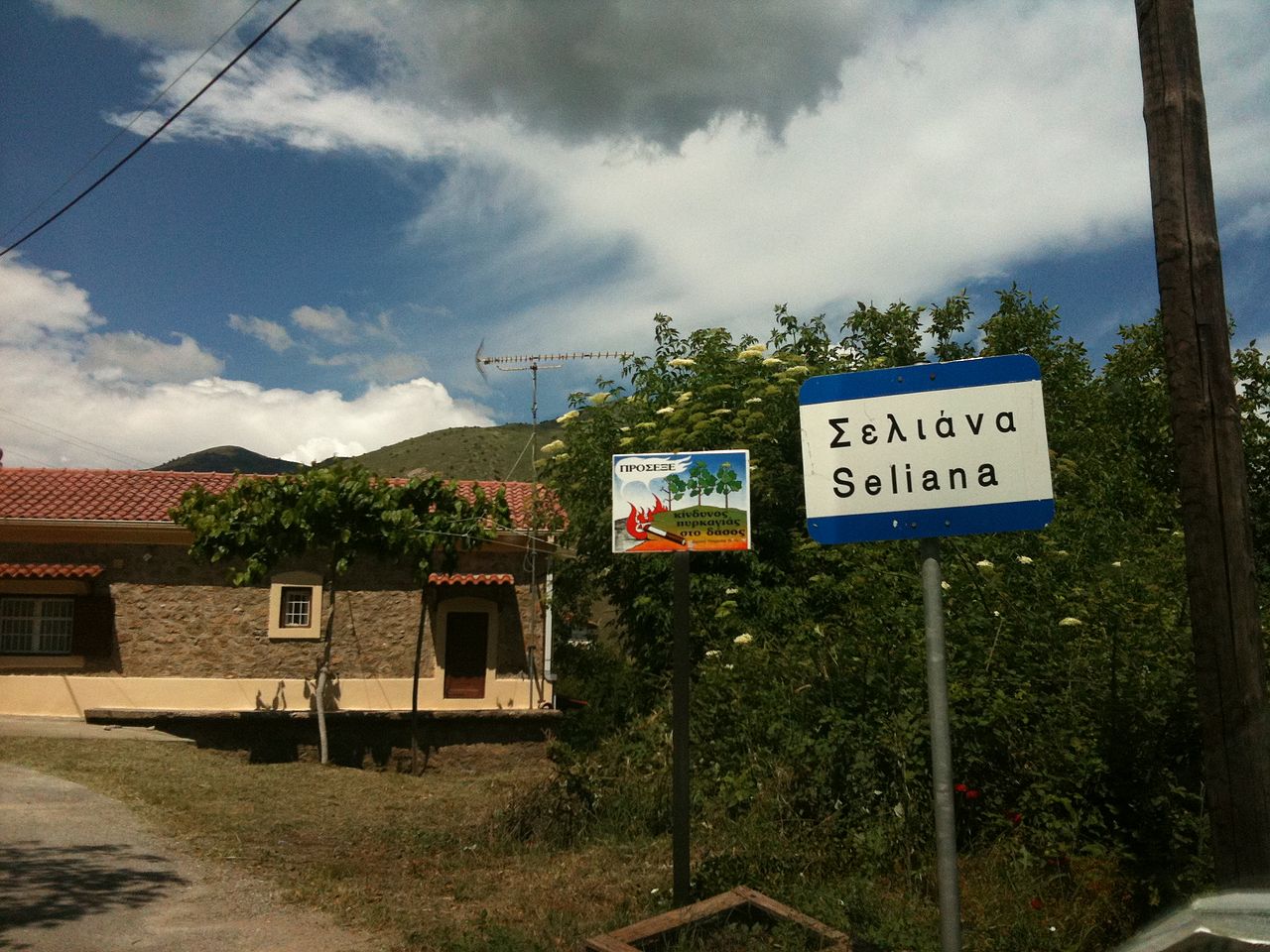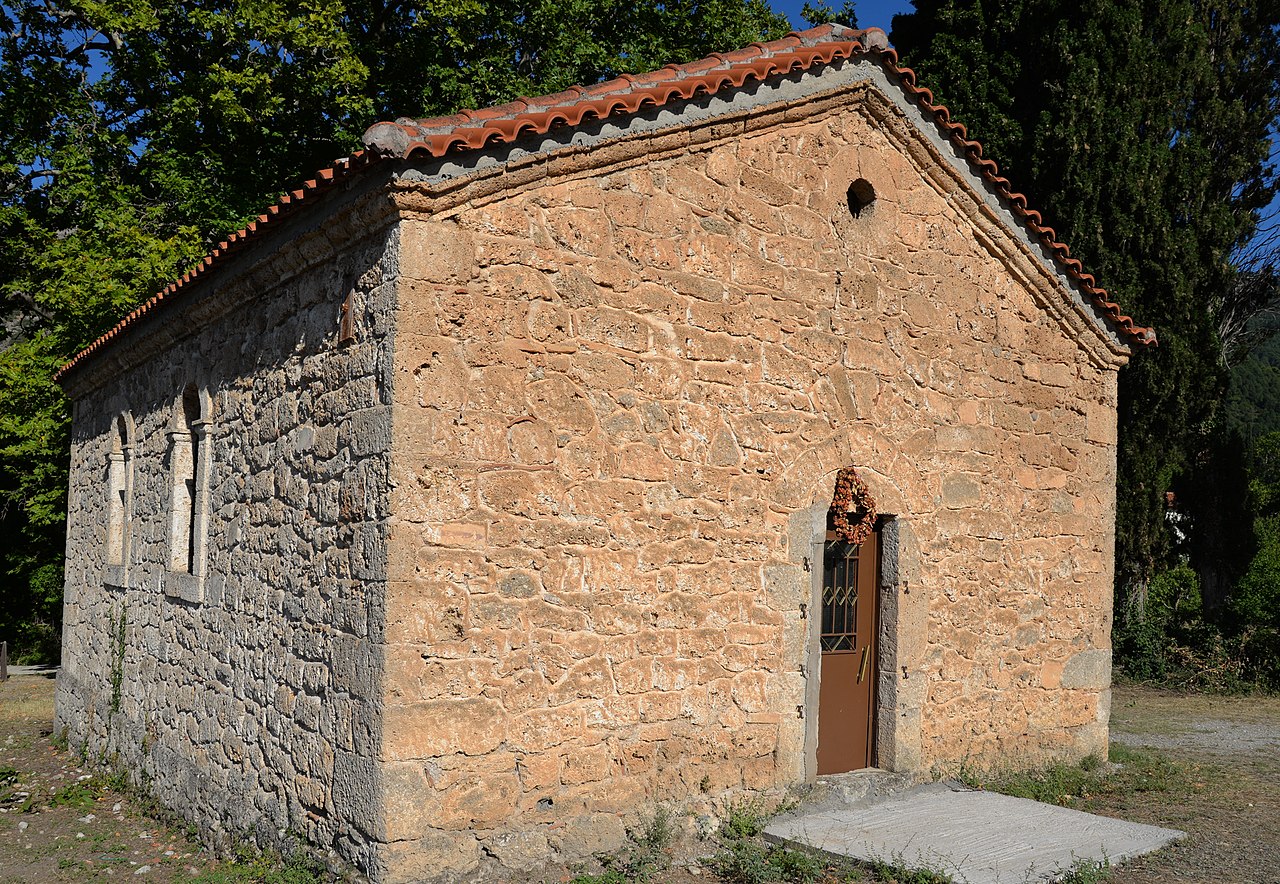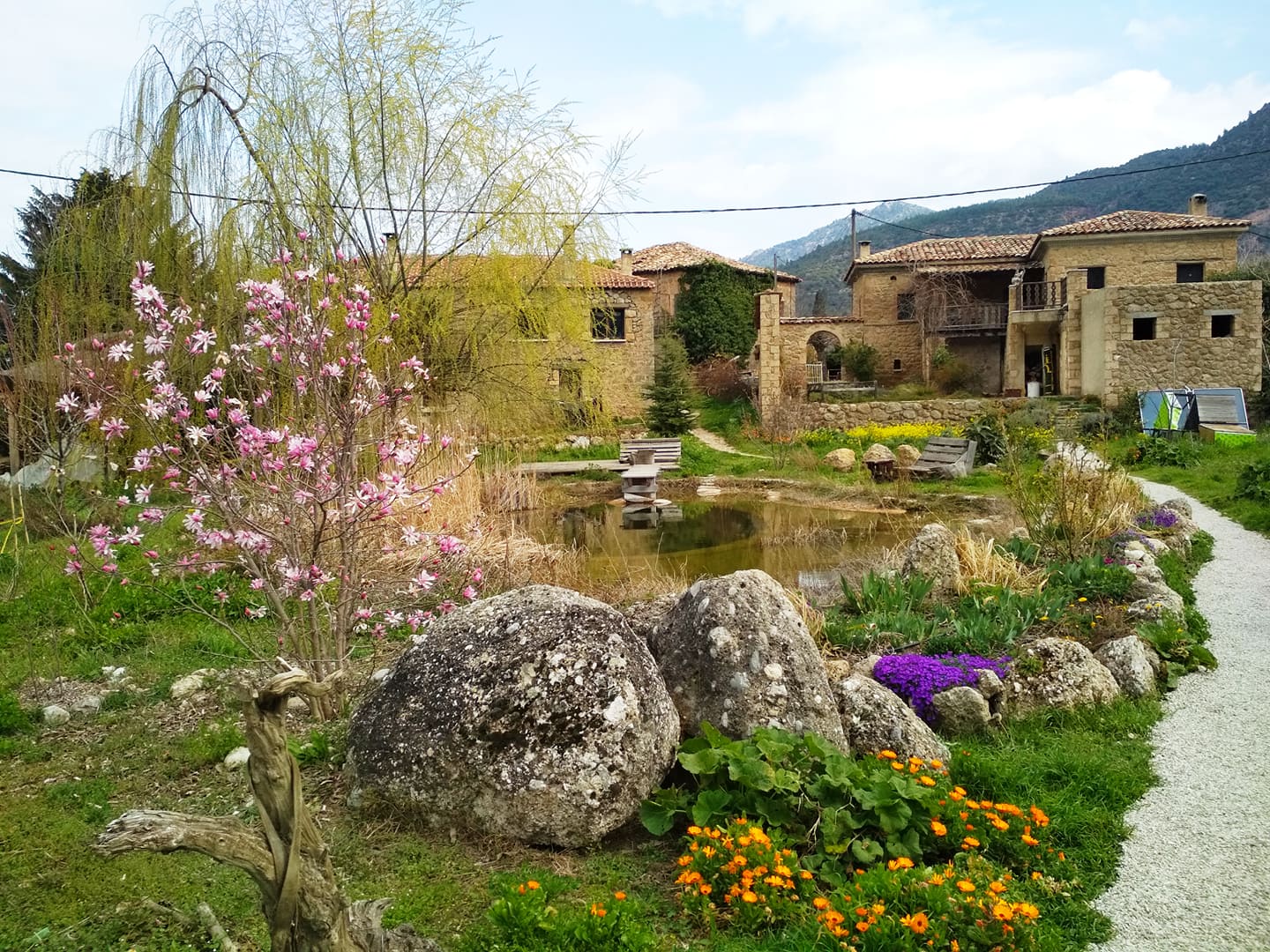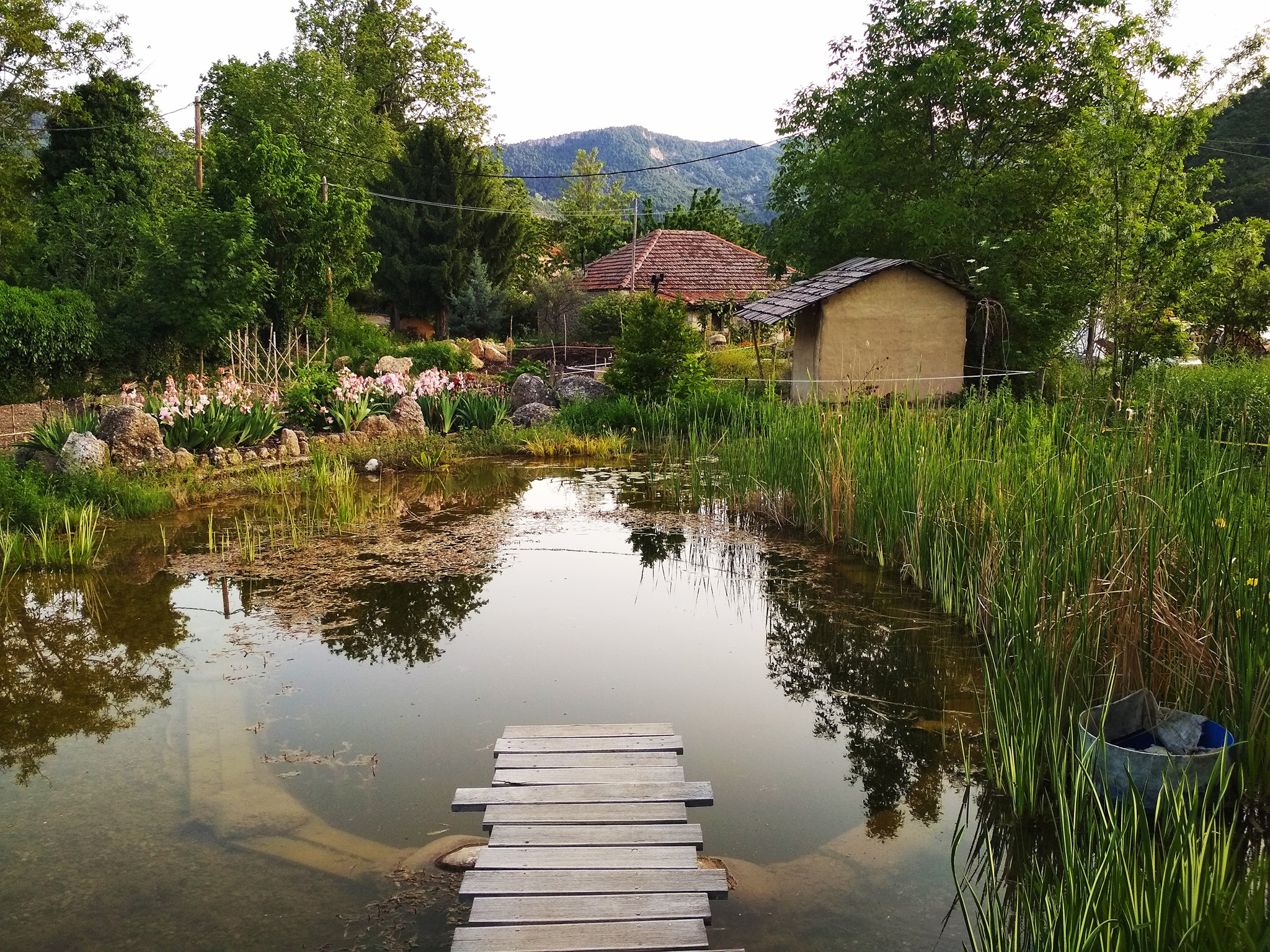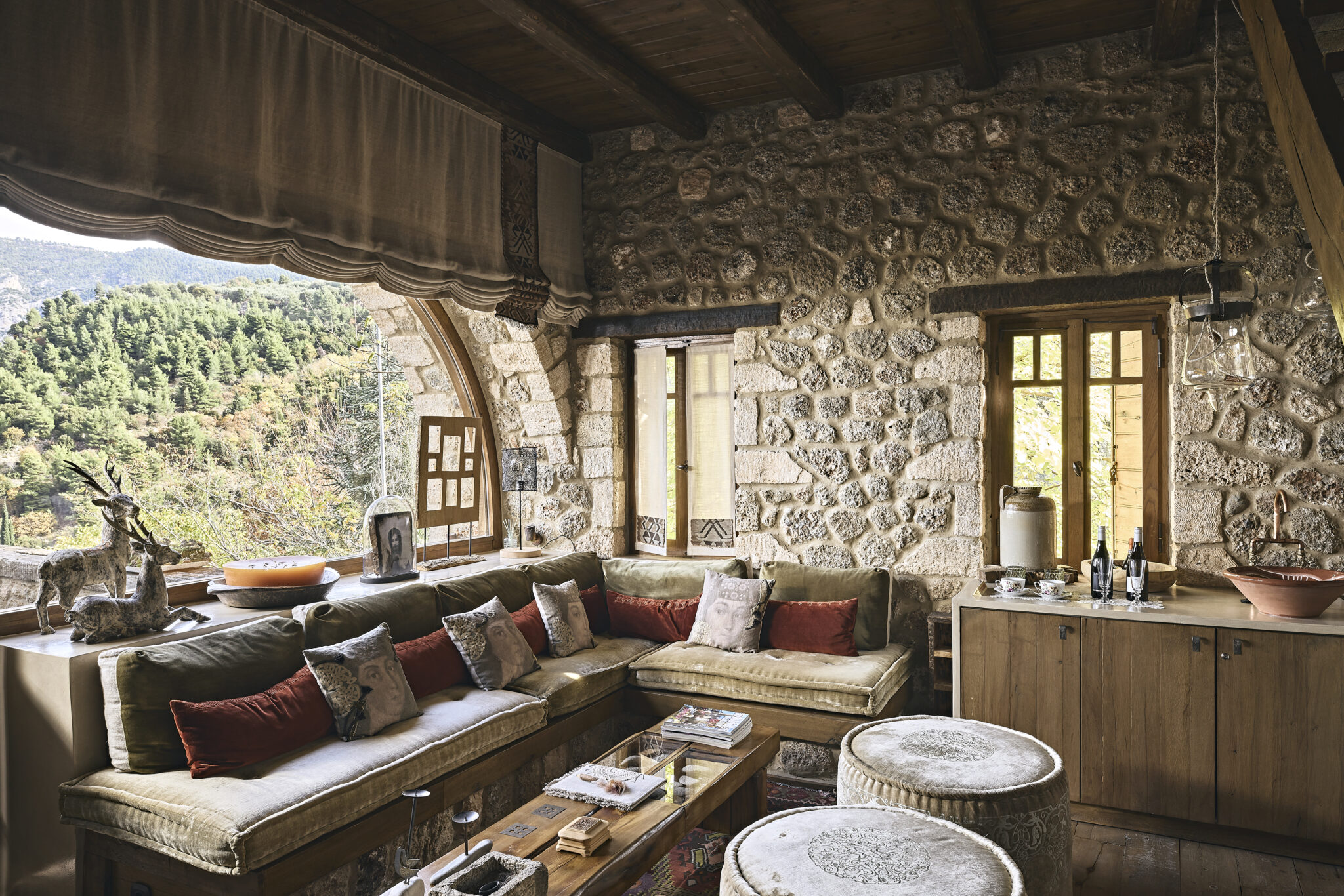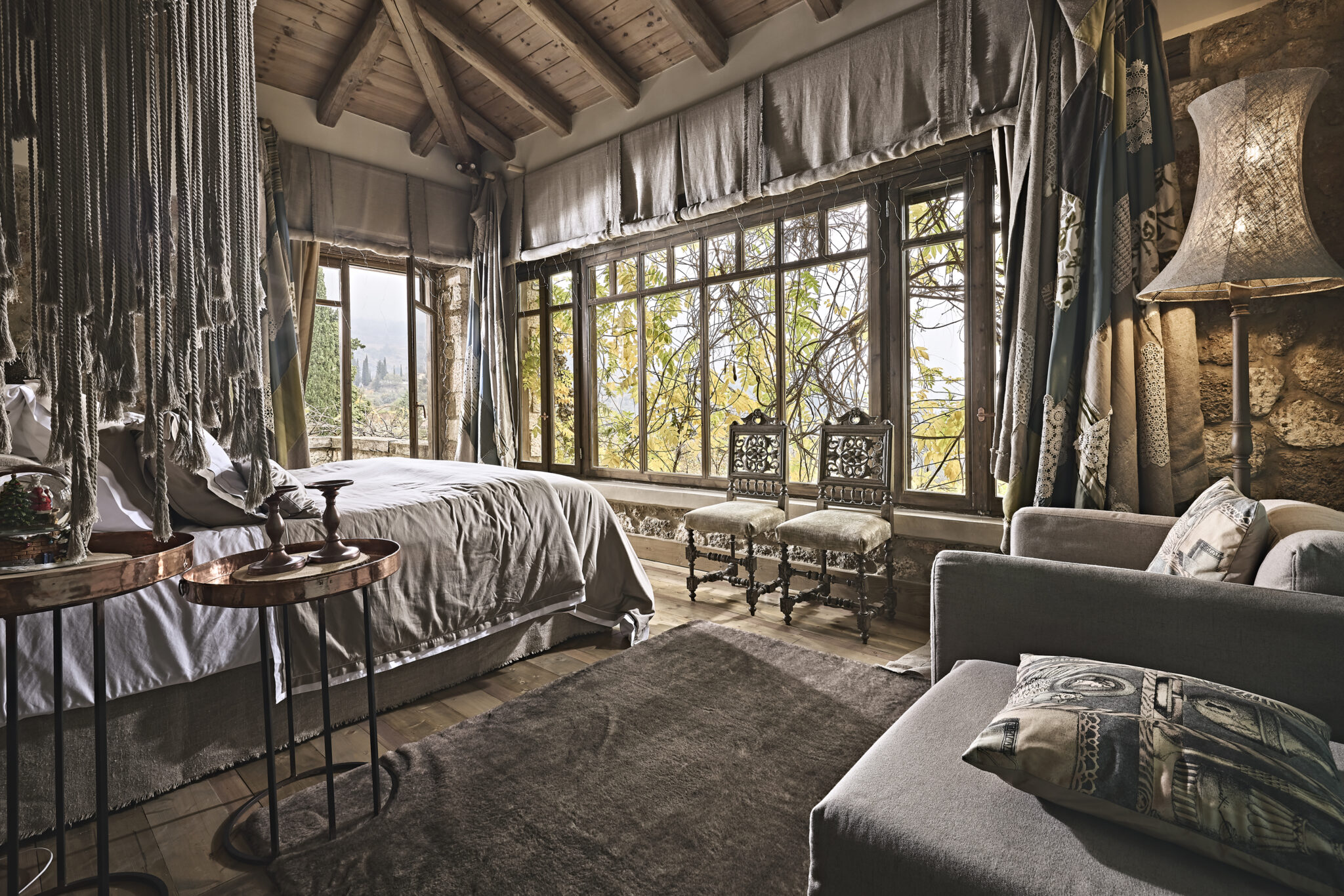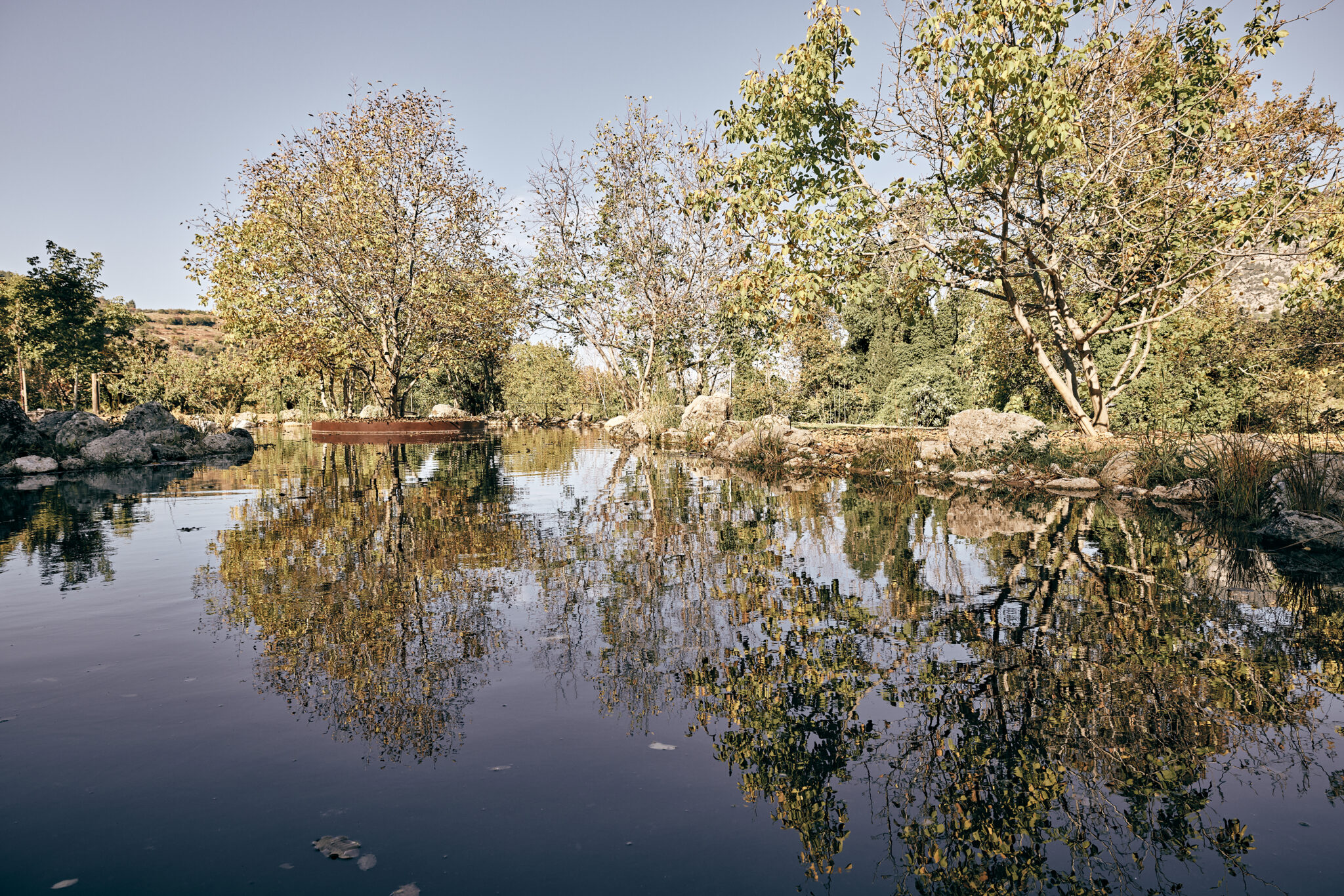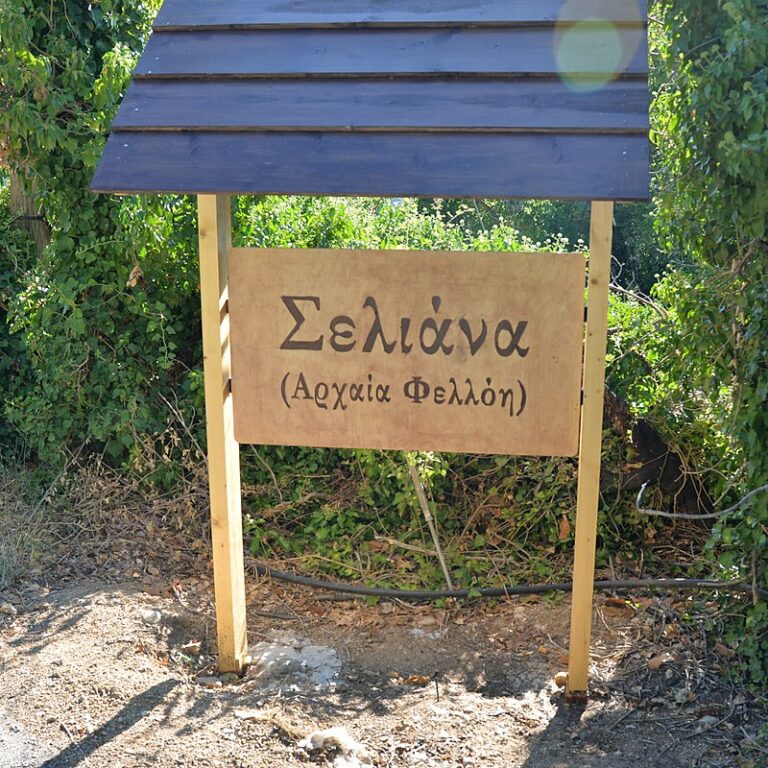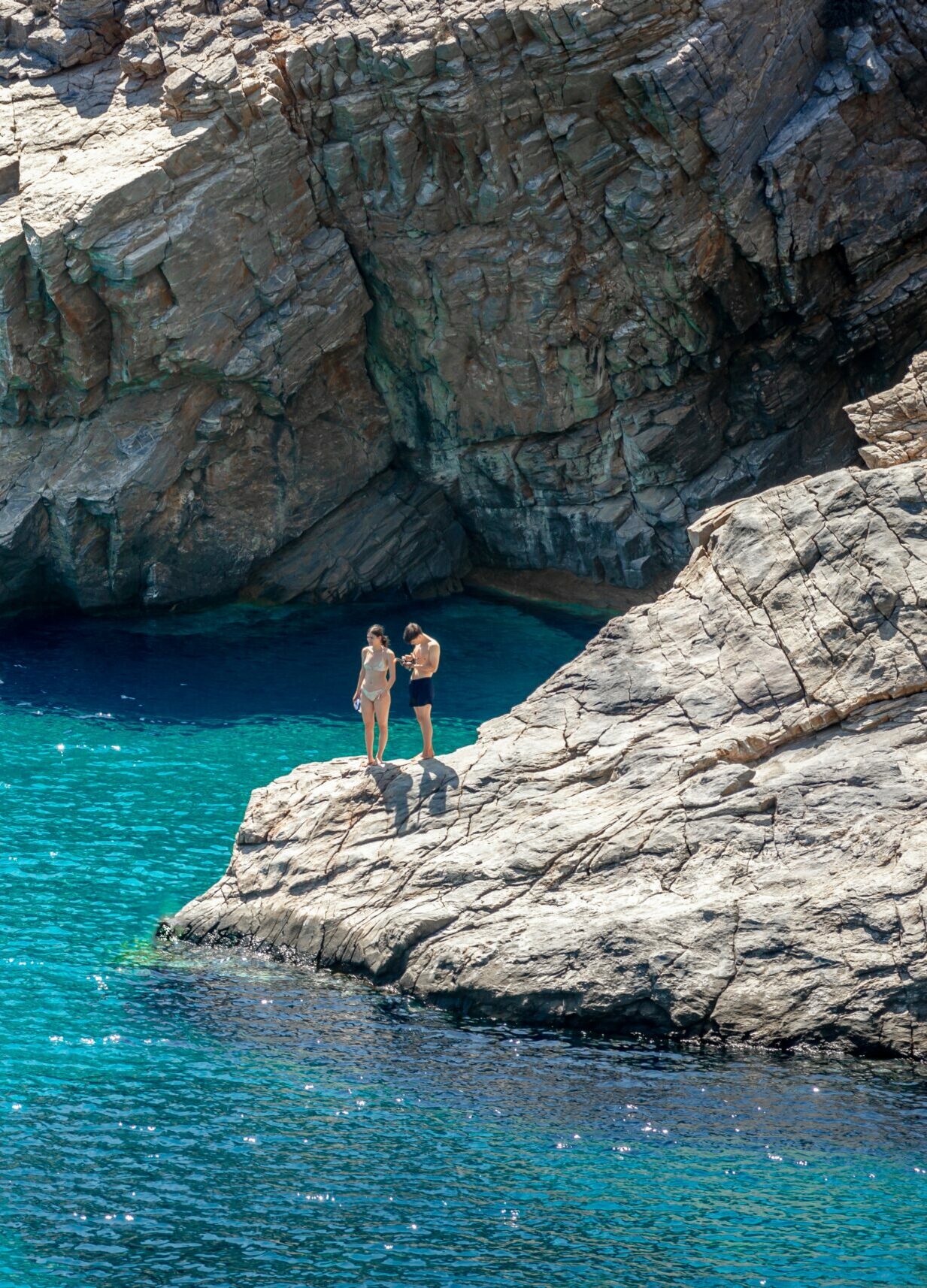Literally hanging over the fertile valley of the river Krios, at the edge of a gorge, Seliana is surrounded by extremely beautiful natural scenery. Between mount Helmos and Zaholi, at 750 m altitude, on the border between the prefecture of Achaea and Korinthia, the century old plane trees, the cherry trees, the apples, and pears all create a beautiful fairy tale with a thousand different shades of green.
At the edge of the village, river Krios with its one arched stone bridge (1895-1905) forms small waterfalls. When you go down a few steps, in the summer you’ll find yourself swimming in crystal clear waters, while in the winter, you can admire the view while listening to the waterfalls’ burble. There are founts and springs spread throughout the village. The centre of the village is the square and the church of Panagia, and the stone tells the people’s story.
Narrow cobbled alleys, the stone building of the primary school (bequest by Andreas Syngros, built in 1904), a dozen chapels. The village’s stone houses, with the tiled roofs, are characteristic of the area’s folk architecture and have been preserved with constant care.
Most of them, however, have been restored or are being restored by owners who take great care in using to the maximum extent possible the old materials. Sit at the village’s sole coffee shop on the square, and drink a coffee overlooking the valley of Krios river.
About 2 km outside the village, at the location Houhlia, that you can reach either by car or on foot, you can explore a cave with stalagmites and stalactites, and walk about 20 m inside it. 2 km away, a bit higher up from the village, at 850 m altitude, where you can also go either by car or on foot, you’ll find the Byzantine Agii Apostoli monastery. It’s a preserved monument dating back to 1743, with great paintings and a wooden altar.
When Shakespeare made the road
With about 300 permanent residents today, Seliana is slowly being reborn from its ashes, after being abandoned. Since 1850, the villagers would go to the lowlands to spend the winter, and they built huts in the location where the beautiful seaside settlement Selianitika is today and waited for the cold weather to end to return to their village in spring. Until 1970, the people of Seliana had two residences. After 1970, an increasing number of them decided to stay by the sea permanently, and so the mountainous village was depopulated, with only a few remaining residents.
Of course, during the 1950-1960s, following the fate of almost the entire Greek countryside, the residents of the village left in large numbers either as internal migrants or to migrate to the USA or Australia.
This migration is very touching, taking into account that in 1912, the residents of Seliana would put up plays, and in particular Shakespeare’s plays, creating costumes and sets that they would carry on donkeys and would tour the neighbouring villages to earn extra money. Their last performance was given in 1951, and they performed with the greatest passion because they had a vital goal: they wanted to make as much money as possible to buy digging tools. Mattocks, pickaxes, shovels. They wanted to open a road to Aigeira. They succeeded. They also used machines, but for the spots that were too bumpy and inaccessible, they had to use the pickaxes that Shakespeare helped them buy. The dirt road was completed – the asphalt reached the village at the end of the 1980s – but extreme poverty won over Shakespeare, and migration was inevitable.
Green living – the rebirth
Today things have taken a spectacular turn. Visionary Greeks have invested in green development (eco-tourism complex Re-Green, theme park Area Synest), foreigners who share this approach have made their home here, and the village is going through a revival, maintaining all of its grace. The village’s unique beauty, as well as its abandonment and decay, have inspired some special people to invest in infrastructure. Dedicated in the natural and authentic way of living, they initiate visitors to an authentic modern everyday experience. Their work breathed new life into the village, brought it back into the spotlight, and turned it into a destination for visitors who enjoy being in nature and experiencing unspoilt beauty.
The dreamy natural environment, the land’s authenticity, and the area’s serenity have attracted people from Northern Europe, who bought land and built houses and have created a community that aims at a sustainable way of life. The valley where the community is located, about 2 km from the village, has been named by them ‘Liveloula” (dragonfly) (facebook.com/LiveloulaEcoCommunity/), they use natural energy sources, recycle and lead lives following the principles of ecology.
The locals know the place with name Misologi and Kritianika. And since they take pride in the fact that Seliana has been proven to be the location of famed ancient Phelloe that Pausanias mentioned, they like explaining that the word Kritianika comes from the word krisi (which means judgement), since that is where the ancient courts were. The findings from the excavations in ancient Phelloe can be viewed in the archaeological museum of Aigio.
Accommodation – Food
Area Synest
An exciting theme park that combines its creator’s, interior designer Martik Manikian, love for birds and the local folklore. With highly pleasing interventions to the stunning natural landscape, a human-sized “nest” was created on the old plane tree, a place of relaxation that allows visitors to feel the warmth and safety a nest gives to birds. Part of Martik’s inspiration was a legend about the fairies of Krios. Legend has it that the fairies transformed themselves into bird-headed feathered creatures with human bodies and flew away. That’s why the park’s visitors will see images of the river fairies in various parts in the park.
The representation of life from the mid-war era until 1950 is very impressive. The cobbler, the blacksmith, the saddle shop, all come to life in front of you. You can walk in nature, by the river, and see dozens of animals (from squirrels, grouse and pigeons, to rabbits and peacocks), while listening to nature’s sounds. Their rooms are dreamy, and their restaurant offers traditional Greek and Armenian flavours. The restaurant is open to everyone, not just guests staying there. Call them for more details on their opening season. Sinevro. Tel. :0030 6980 085 090, www.areasynest.gr
Guesthouse-tavern Vaios
4 km away from Seliana, in the village Perithori, you’ll find Vaios guesthouse with its tavern, the only place in the area that is open all year round. Mrs Katerina prepares delectable homemade food – pies, roast goat, goat soup (meat she gets from her farm), her own dairy (cheese and yogurt), trachanas (traditional pasta made with flour, milk or yogurt), hilopites (traditional pasta), sourdough bread. A neat guesthouse with simple rustic décor, hot water and heating and all necessities. Call in advance to see what’s on the menu. Perithori, tel.: 0030 2624061924
You get to Seliana starting from Aigeira, following the signs to Ancient Aigeira, to Aiges and Monastiri. It takes about half an hour to drive the 19 km from Aigeira to the village.
Read also:
Kalabaka: Special museums, tavernas close to Meteora



